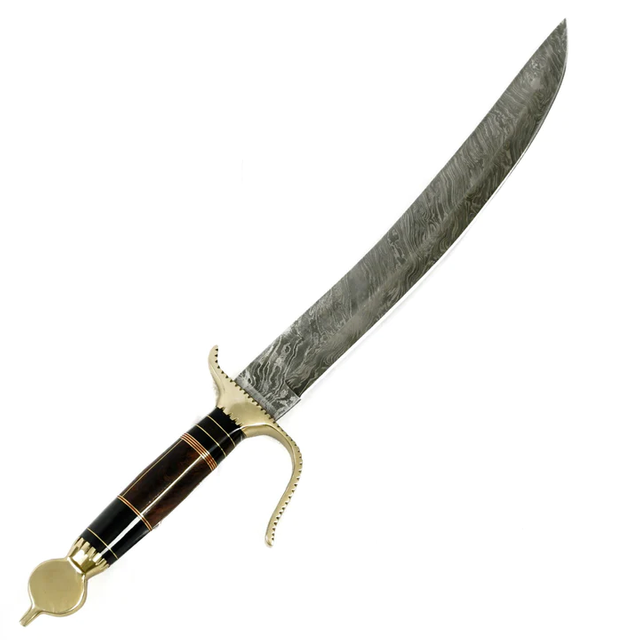Authentic Scimitar Sword Designs For Your Collection or Training
The scimitar sword is one of the most recognisable blades in the history of swords. It has long been known for its curved shape and quick movement, and is equally recognised for its beauty and function. This sword can offer something that is quite the opposite of all of these swords you probably already have in your collection, be it for martial arts use or as a keepsake.
This article will explore some of the scimitar designs that can be used for training or display. If you are searching through the massive amounts of traditional weapons and are wondering what you should add to your collection, maybe it's time to have a scimitar.
A Closer Look at Traditional Scimitar Making
Traditional scimitar construction focuses on balance, sharpness, and curves. The scimitar is often made from high-carbon or Damascus steel. The curved design allows for quick, slicing movements. A lot of scimitars have hand-carved handles in the scabbard at the time of forging, and they may have unique patterns on the blade. The craft of scimitar making gives the user an object that is both functional and artistic. Whether displayed or wielded, the craft reflects the skill and traditions inherent in its creation.
Characteristics That Set a Scimitar Apart.
A scimitar also has a different shape and balance than other swords, giving it its style of motion. Here are some typical characteristics:
- Curved blade: Increased slicing capability when used in combat or practice.
- Light-weight frame: More manageable with one-handed or two-handed grips.
- Decorative handle: Most have carved or engraved handles.
- Strong materials: For durability and strength, most are made of Carbon steel and Damascus steel.
Scimitar Sword Designs for Display
Many individuals choose to display scimitars with home décor or historical collections. Their shape and delicate details make them very worthwhile display pieces. Here are some display models to consider.
- Antique Replicas: Based on Persian, Ottoman, or Arabian origins.
- Decorative Scimitars: Inlaid, engraved, or with mounted handles.
- Wall-Mount Sets: Typically come with a plaque or display rack.
Scimitar Options for Training and Martial Arts
While certain individuals appreciate the scimitar sword for its aesthetic appeal, other practitioners utilize it in a more immersive way for training purposes. A training scimitar should be well-balanced and may come in a few styles. Training options differ from decorative; here are a few things to check:
- Durability: Is it constructed from high-quality steel for frequent utilization?
- Proper Weight: For better control and technique.
- Safe Edges: Edged for blunt practice and sharpened for advanced training.
- Comfortable Grip: Avoids slipping during prolonged use.
How to Select the Correct Scimitar?
If you are looking scimitar for sale, there are many choices available, and your selection will depend on what you plan to do. Also, use the following suggestions:
- To Display: You should consider the detail of the design, the patterns, and the quality of the finish.
- For Training: You should be more functional than fashionable. Make use of the blade's balance and grip strength as your main strength.
- Your Budget: The range is vast, based on craftsmanship and materials.
- Historical Representation: Some people will select a sword based on a culture or time frame.
Caring for Your Scimitar Sword
Proper care will keep your scimitar in excellent condition. Here are a few easy-to-follow care tips:
- Clean Regularly: As a general rule, take a cloth and wipe down the entire blade after using the scimitar to keep the rust away.
- Store Safely: Store in a dry environment and use a sheath when available. Display mounts are great too.
- Oil the Blade: Use a very light oil to protect exposed steel from moisture.
- Regularly Inspect: Regularly inspect your sword for cracks, chips, and other signs of wear and tear, especially if you are using it in a training/rehearsal situation.
Conclusion
The scimitar sword is more than just a weapon; it is a combination of beauty, history, and practicality. Whether you are fascinated by its curved shape for its purpose in martial arts, or simply want to own a piece of history, there is a scimitar suitable for you. Stores like BattlingBlades make it easy to search for handcrafted types that fit your needs. Browse their catalog and find an ideal piece for your collection.
